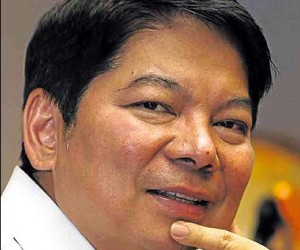MANILA, Philippines—Governor Amando Tetangco Jr. of the Bangko Sentral ng Pilipinas said the monetary authority is prepared to use alternative means to address potential surge in foreign portfolio investments, noting that adjustments in key policy rates alone may not be enough.
Agreeing that the recent credit rating upgrade for the Philippines may lead to a rise in capital flows, Tetangco said the BSP is inclined to counter a surge and its ill effects by using other “tools” besides adjustments in the policy rates.
“Capital flows are influenced by many factors, and one of the most important is economic growth. It may also be influenced by interest rate differential (difference between interest rates in the Philippines and abroad). However, we can no longer rely on just policy rate adjustments to address challenges from surges in capital flows,” Tetangco said Tuesday.
“We have to use other tools. We have to be creative to determine specifically what tools to use,” he added.
BSP officials earlier said other tools that are available include “macroprudential tools,” which are bank regulations. Examples are regulations that limit exposure of banks to certain assets.
The BSP last Thursday cut its key policy rates—which influence commercial interest rates—by another 25 basis points, bringing those to new record lows of 3.5 and 5.5 percent, respectively.
Cuts in the rates are seen reducing the gap between interest rates here and abroad. The consequence of lower yields from peso-denominated assets due to the rate cut by the BSP is seen to help temper capital flows.
Although foreign portfolio investments are welcome, the BSP said too much of those are destabilizing to the economy. These could lead to excessive volatility of the exchange rate, for instance, thus disrupting performance of businesses, especially those engaged in import and export.
Moody’s on Monday raised the Philippines’ credit rating from two notches to just one notch below investment grade. Government officials are expecting the Philippines to get investment grade by next year.
Market analysts said the latest upgrade by Moody’s could drive capital flows to the Philippines, but they believe more may come once the Philippines gets an investment rating.
Moody’s cited the Philippines’ favorable economic performance so far in the year as one of the reasons for the upgrade.
In the first semester, the Philippine economy grew by 6.1 percent from a year ago, one of the fastest economic growth rates registered during the period.
